“The Swell Road of the Estate”
Background
Unlike most of the roads on the Estate, Brownhill was already in existence when Archibald Corbett bought his 278 acres of farmland from the Earl of St Germans in 1896. Or at least part of it already existed: it was then a cul-de-sac with an entrance onto the Bromley Road in Catford, created when Priory Farm was demolished in the late 1870s.
Corbett extended it eastwards to meet with Hither Green Lane and St Mildreds Road. It was one of the first streets he developed on his new ‘St Germans’ Estate. Later, of course, it would become part of the hotchpotch of roads that form the South Circular.
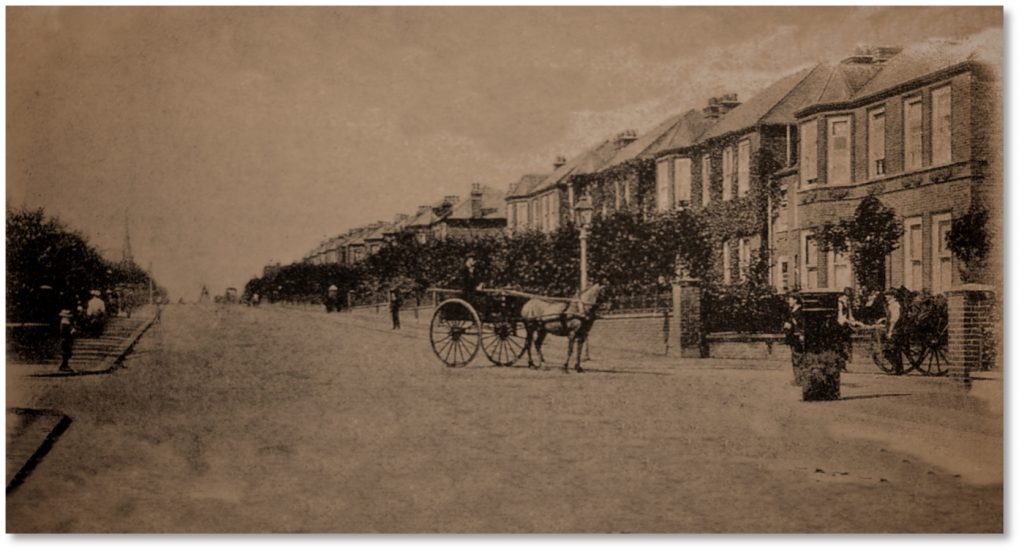
Brownhill Road at the junction with Torridon Road, long before the South Circular had been thought of. c 1910
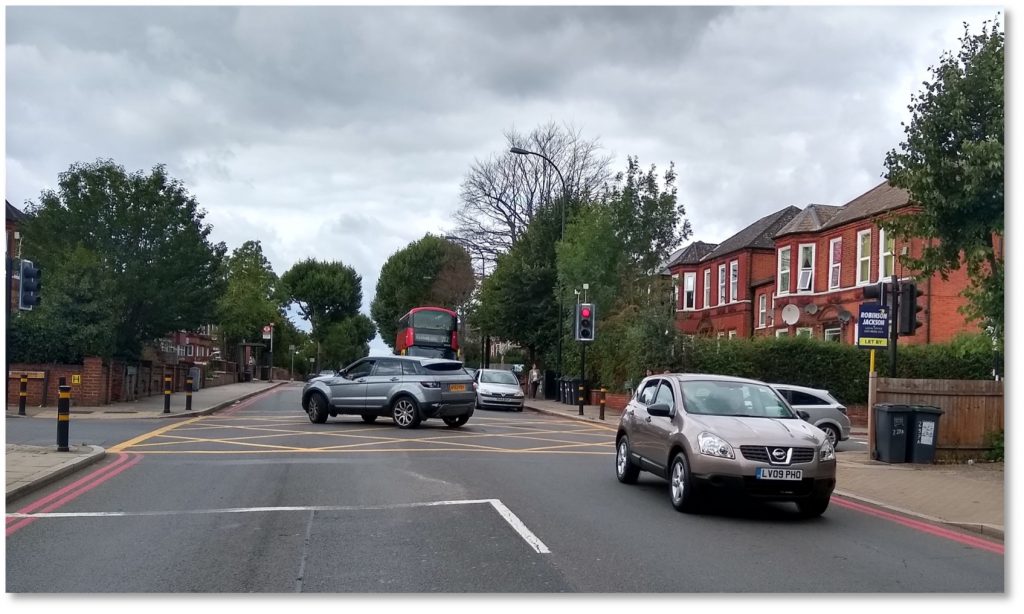
The same scene today, still with a few of the trees remaining
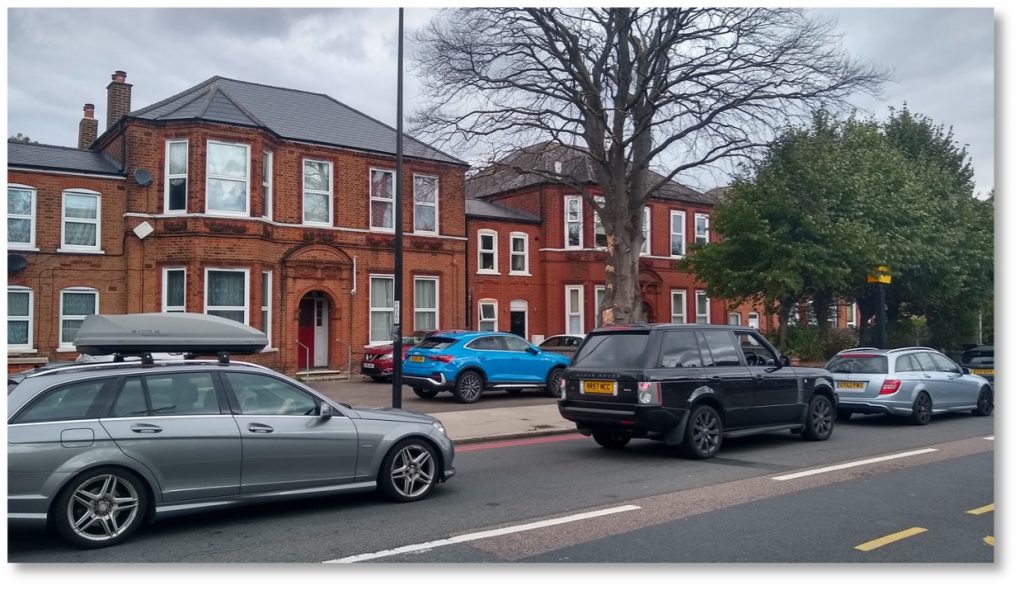
It’s a busy road now, and many of the houses have been turned into flats, but in 1911 it was the finest street on the Estate
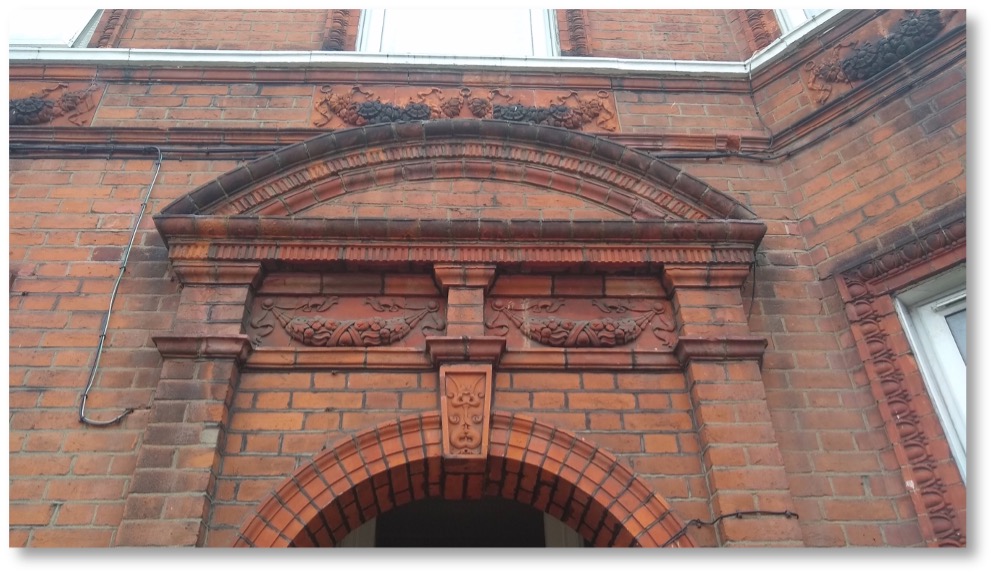
Terracotta tiles and ornamental brickwork singled out the houses as a cut above the rest
In 1898 construction of the new houses began, and in total 66 were built. Nine shops were also built, with living accommodation above, where the houses ended at the top of the hill. It doesn’t sound like a lot of houses, but many were large six-bed properties, and in the early 1900’s this was the top place to live if you were thinking of buying a Corbett house in Hither Green. The Estate Sales Brochure detailed what a (rather wealthy) buyer could expect:
“Villas having a frontage of 47 feet, and containing a Drawing-room, Kitchen, Scullery and Servants’ W.C., on the ground floor, with large cellar accommodation for coals &c. The floor above contains six handsome bedrooms, fitted up with marble chimney pieces, and well-lighted bathroom, having Lavatory Basin, Hot and Cold Water supply, and W.C.”
Such a house would set you back the grand total of £508 on a 99-year lease (with ground rent of £13 per year), or £860 if you bought the freehold outright.
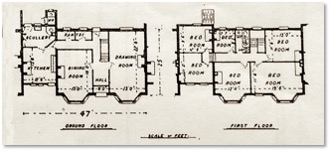
Layout of a six-bed Corbett House from the Estate Brochure of 1903
The Early Residents: details from the 1911 Census
When the census people called in April 1911, there were 348 residents and 12 visitors in the Corbett part of Brownhill Road (which starts just over the crest of the hill, beginning with the shops and the Baptist Church, which was opened in July 1903). There were 2.2 children per house on average – par for the course on the Estate – and 80% of households contained a married couple. There was an average of 4.6 people per house, but of course these were the biggest houses so they wouldn’t have been as cramped as the folks on Glenfarg Road for instance, where the same number had half the amount of bedrooms. Edith and William were the most popular adult names, and Doris and Eric the favourite amongst children.
The numbers of people moving to Brownhill from inside and outside London also pretty much hit the average for all streets: 68% were born inside and 28% outside the capital as we know it now. 12 out of the 75 houses and shops listed a woman as the Head of the household, which at 16% is one of the highest on the Estate. Most of these women were widows, with several listing ‘private means’ or ‘independent means’ in the box on the census for profession. Edith Bishop at No. 334 stands out because she was the Head of the Household and she worked as a Schoolmistress.
The most packed household was actually in one of the shops – at No. 261, where two families shared the rooms above the workplace. William and Cissie Jordan ran the Stationers and Newsagent, and had a one-year old boy called William and a 0-year-old girl called Doris. Joseph and Kate Shepherd were their fellow occupants – presumably each family had a separate floor. The Shepherd children were numerous: five sons (Fredrick, Leonard, Richard, William and Thomas), and two daughters (Kate and Ruby). Then there was Florence Smith, a girl of 13, who someone had adopted (we can’t tell which family, but you’d have thought the Jordans). That’s 14 people in total living in one property, which is a record for the Estate!
Another busy household was at No. 138, where Elizabeth and Joshua Westmoreland lived with their five sons and three daughters. Monthly Nurse (see the Profile on Glenfarg Road for more details of this job) Emma Wilkins completed the list of 11 occupants, caring for Edith and her new-born son who didn’t yet have a name – he’s just listed as “baby”.
Joshua Westmoreland’s occupation was Warehouse Keeper, and we can assume that his was a pretty senior role since they’d been able to afford such a grand house. Some of the other homeowners were also quite high up the employment ladder: Joseph Bell at No. 317 was an Assessor of Taxes; John Walker at No. 350 was a Bank Manager; William Cowell at No. 299 was a Chemist Manufacturer; William Stone at No. 289 was a Printer and Publisher from New York; Edward Kraus at No. 308 was a Diamond Cutter from Germany; Arthur Snook at No. 312 was a London County Council Schoolmaster; and Henry Wilson at 326 was a Physician and Surgeon. There were also several Clerks, as was customary on the Estate – many of them the sons of the Heads of Households.
But by far the most common occupation in Brownhill however, was the one done by many of the women: General Domestic Servant. 43 of the 75 properties had live-in servants, a whopping 57%, which is by far the highest on the Corbett Estate.
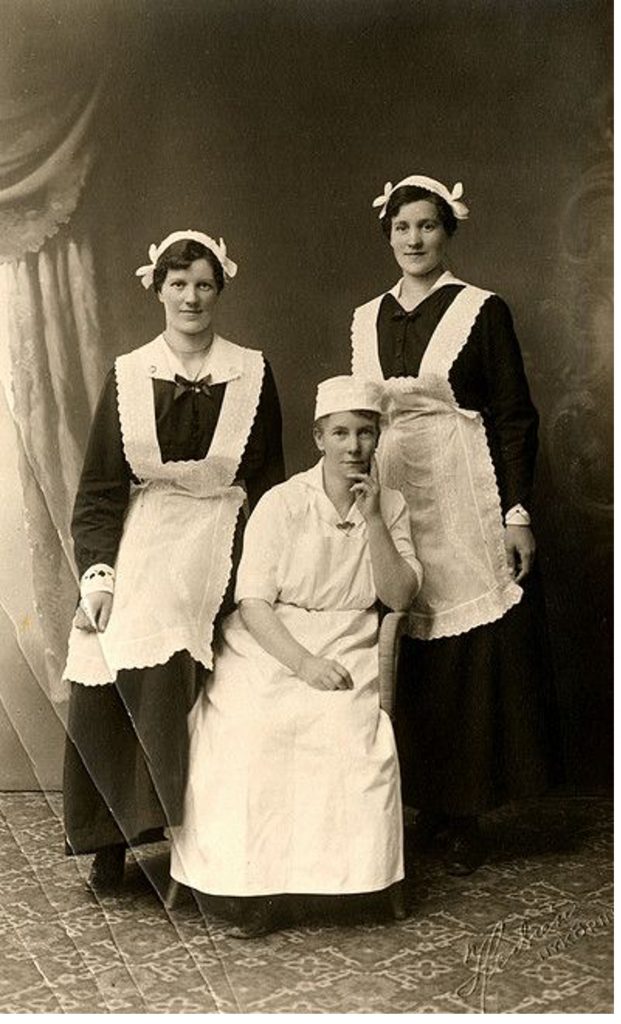
These domestic servants (not on the Estate) look quite cheerful, but the life was gruelling
Three of the houses actually had TWO servants: Arthur Barker (age 51, profession Senior Clerk) at No 287 had no family but employed 17-year-old Winifred Tate (originally from Norfolk) as a General Domestic Servant, and Ellen Day (age 31 from Hertfordshire) as his Housekeeper.
A little further down the road at No. 295 Richard Dollard (age 45, a Doctor) and his wife Ada (age 42 from Bloomsbury) had Emily Williams (age 20 from Surrey) and Kate Tinning (age 26 from Fulham) as their Domestic Nurse and Cook respectively. The Dollards had two young sons, Ralph and Dennis (age 1 and 3), and Ada’s mother also lived with them (at 85 she was the oldest resident in the street).
And at No. 307 Samuel Meddleton (a 42-year old Tailor) and his son Silvester (age 17, working with his father as a Tailor) had Julia Noon (age 28 from Notting Hill) and Dora Helyar (age 19 from Somerset) to keep the household ticking over.
The other householders probably ‘made do’ with a ‘Day Girl’ – a woman who lived elsewhere (possibly in Sandhurst Road) and did the cooking and cleaning. But not having a resident servant probably moved them a couple of rungs down the social pecking order.
SHOPS
As befitted its status as the premier street on the Estate, Brownhill got its own little parade of 9 shops, called ‘The Pavement’, at the top of the hill. In 1911, William Jordan ran a Stationers and Newsagent at No. 261 (the living accommodation of which he shared with Joseph Shepherd, a milkman, and their families and relations – 14 people lived at the address!); George Boston ran the Butchers; Edward Welman owned the Drapers; Charles Flint was a Pharmacist and Optician; Thomas Barnes sold second-hand books; and Ludwig Henkel had come over from Germany to run a Baker and Confectionary at No. 271. The well-to-do of Brownhill didn’t have to go far to satisfy their every retail whim!
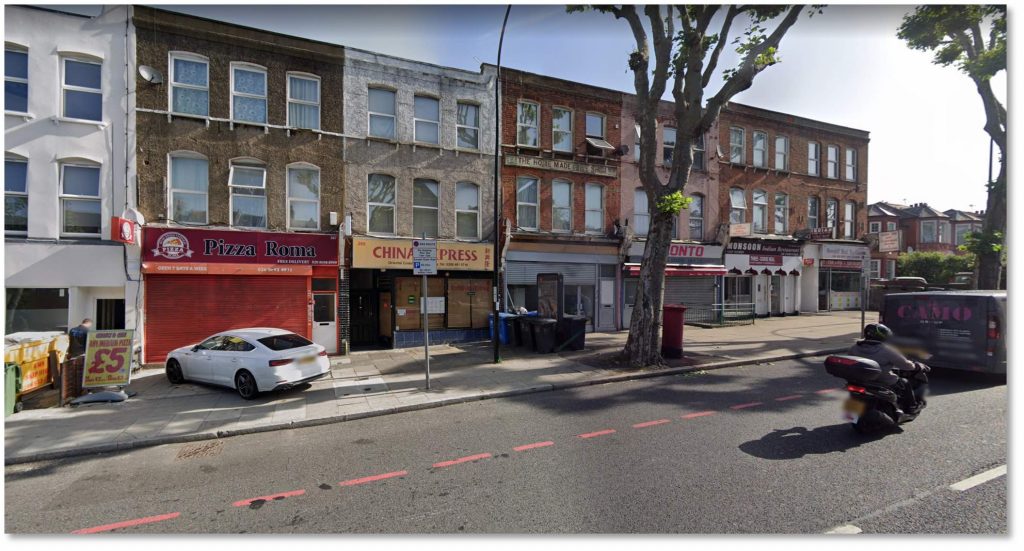
Shops at the top of the hill: No. 271 (the Baker and Confectioner) is 4th from right.
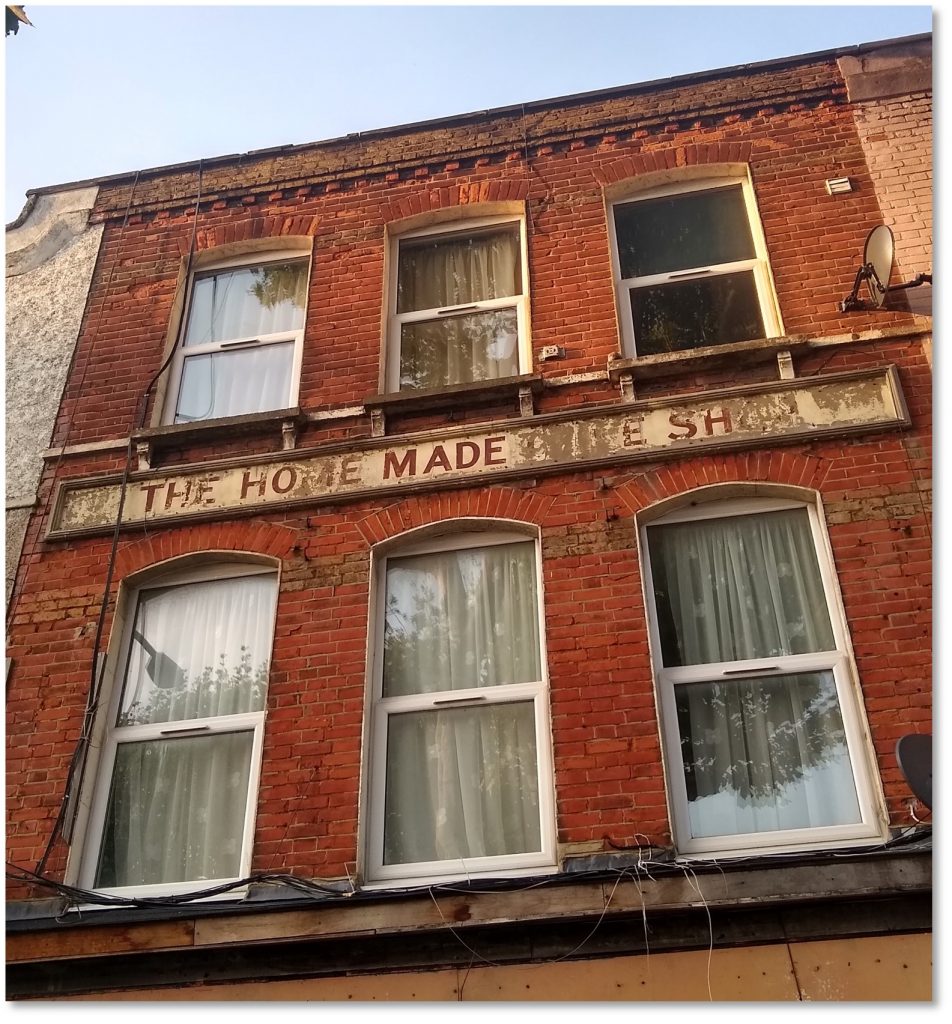
A close-up of the surviving sign above the Bakers: “The Home Made Cake Shop”
What class are you in?
As we’ve seen, the residents of Brownhill Road had some of the biggest houses and the most servants on the Estate. Brownhill was described as “the swell road of the Estate, red as far as covered” by social reformer Charles Booth’s investigators on their walk around in 1899. Red meant that the residents were classified as ‘middle class, well to do’, which was only one step down from the top grade of ‘Upper Middle and Upper Classes’.
Class was a major factor in people’s lives, and was determined by your occupation, wealth and education. Everyone was very conscious of their ‘place’ in society, and people would go to great lengths to hold on to their bit of status. “The lower classes smell” is what author George Orwell says he was taught growing up. If you were working class the best bet for work was to go ‘into service’, and there were 1.27 million people doing just that in 1911. However, that figure is lower than ten years previously, when there were 1.38 million indoor domestic servants. This trend would increase rapidly with the onset of war a few years later.
The Corbett estate was home to people from across the social spectrum, particularly when it was being built and the working class labourers rented rooms by the week in Sandhurst Road. But Corbett aimed it squarely at ‘respectable’ lower middle class people who often commuted to work as clerks in London.